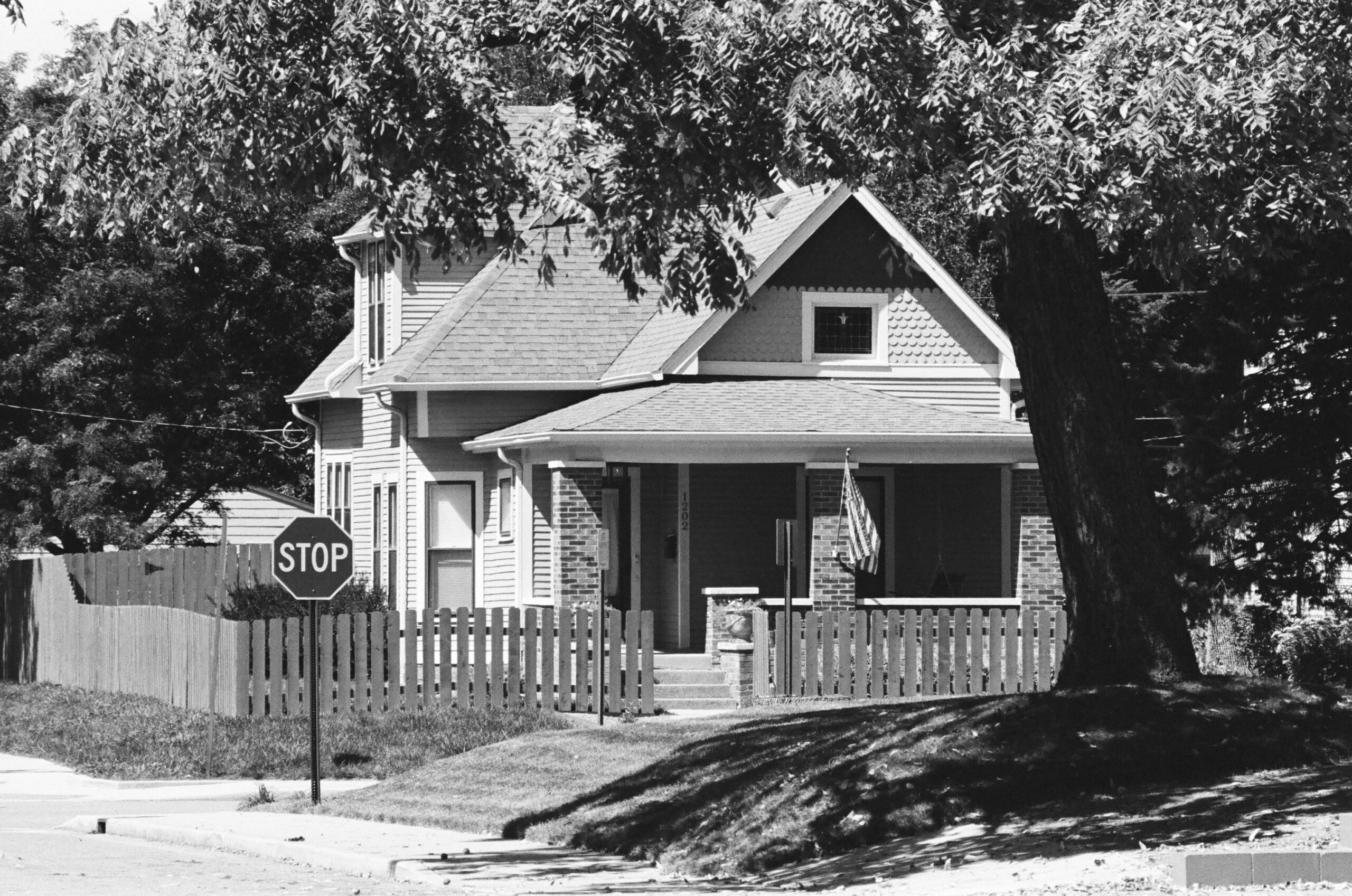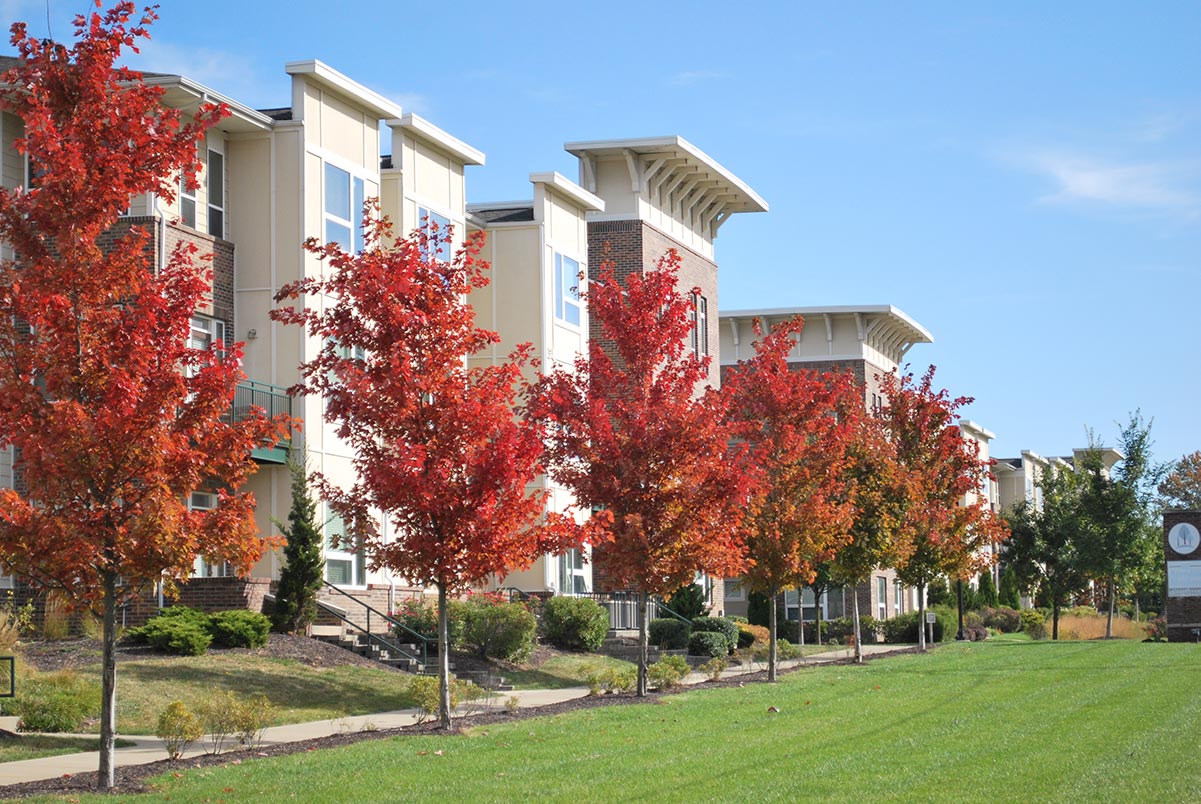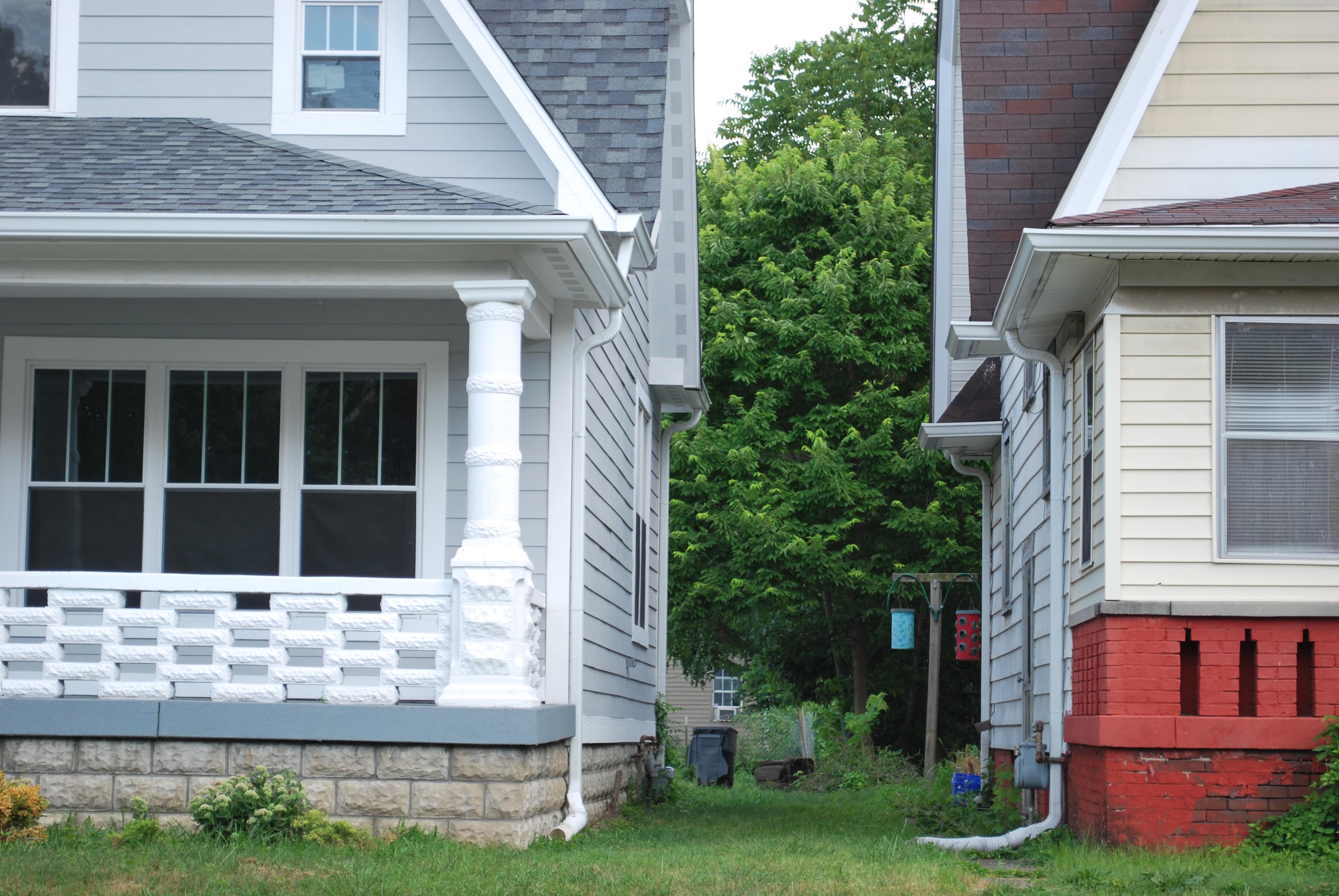Indiana Senate Bill 230 would have required landlords to make necessary repairs to their properties. We examine the renters impacted by the bill’s failure. There are 294,000 people living in 170,000 low-income renter households. Most of these individuals are women, and most of them are White. Black residents are overrepresented among low-income renters. In Central Indiana, they make up 40 percent of individuals in low-income renter households, but only 15 percent of the population.
Indiana Tenant Policies: Impact on Renters who are Low Income or People of Color
In its most recent session, the Indiana State Legislature considered, but did not pass, a bill that would have brought Indiana’s renter protections more in line with 45 other states by requiring landlords to make necessary repairs and providing enforcement mechanisms if they do not. We provide an analysis of renters in Central Indiana and examine who was impacted by the bill’s failure.
Sponsored by Senate Democrat Fady Qaddoura, D-Indianapolis, with Sen. Greg Walker, R-Columbus, and Sen. Shelli Yoder, D-Bloomington, Senate Bill 230 would have given tenants the right to withhold rent if their landlord fails to make necessary housing repairs and the right to make the repairs themselves and deduct the cost from the next rental payment if the landlord fails to do so within 30 days. Indiana is one of only five states without these habitability enforcement rights.
Speaking with The Polis Center’s analysts, Senator Qaddoura highlighted the necessity for providing recourse for tenants when landlords fail to repair critical systems, such as heat, water, gas, or electricity. Qaddoura emphasized that most landlords in Indiana take care of their tenants and comply with providing necessary repairs. However, he stressed the increase in out-of-state, corporate landlords that have allowed properties to deteriorate. Negligent corporate landlords such as those responsible for the Lakeside Pointe at Nora complex failed to provide heat, which led to the use of space heaters and resulted in at least seven fires in 2021 alone. Situations like Lakeside Pointe at Nora are further complicated when landlord corporations operate as non-profits entities, which makes enforcing legal penalties and oversight more difficult.
Senator Qaddoura also shared the frustrating reality of tenants attempting to communicate with landlords who are out of state and unresponsive. Unlike with local landlords, tenants have little recourse for tracking down owners or property managers when multiple LLCs are created to purchase investment properties. As essential services such as water, electricity, plumbing, etc. become unusable or unavailable, tenants are required to contact the landlord or property owner and wait for them to remedy the situation. However, in multiple cases, these repair requests remain unaddressed, and tenants are not allowed to make the repairs themselves.
According to Senator Qaddoura, families with language barriers are often prime targets for such abuses, as their lack of comfort with the English language can prevent them from speaking up. The bureaucratic process for reporting healthcare and habitability violations can be intimidating and confusing, which often leaves families with little recourse in seeking protection from negligent landlords. Families without internet access or comfort navigating government websites can be targets for abuse by landlords who view them as little threat if the situation escalates. Immigrants and communities with historical distrust of the police department also are at risk of being exploited by landlords who know people of color are less likely to turn to the police due to historical relationships of mistrust. The American Bar Association shares that oppressive laws, legalized discrimination and racism, and the denial of basic human rights have created an “almost inherited gulf of mistrust between the communities of color and their law enforcement agencies”
SB 230 was converted into a summer study session to investigate jurisdictional issues specific to Marion County’s investigation and enforcement of cases of negligence due to its UNIGOV status. As a combined city/county municipality, jurisdictional confusion prevents the Department of Public Health and the Bureau of Neighborhood Services from taking action. UNIGOV leaves agency discrepancies as to the proper jurisdiction for these cases. Since neither is the specified department of action, neither department can enforce the claims of neglect that endanger the lives of tenants.
Recently, the Indiana General Assembly nullified renter protections passed by the Indianapolis City-County Council. The city’s ordinance would have required landlords to notify tenants of their rights and provide a $250,000 tenant legal aid fund. In March 2020, the legislature passed a bill preventing local governments from regulating landlord-tenant issues such as fees, security deposits, and lease terms. While Governor Holcomb vetoed the bill, that veto was overridden.
Demographics of Low-Income Renters
There are 271,000 renter households in Central Indiana, which is about one-third of all households. Renters earn, on average, less money than homeowners. The median household income for a Central Indiana renter is $38,110, compared to $82,502 for owners. Overall, the median household in Central Indiana earns $63,545 per year.
There are 170,000 low-income renter households in Central Indiana (those earning less than $50,000 per year, which is about 20% less than the median household income in the region). Nearly two-thirds (63%) of renter households are low-income. In Marion County, this figure is higher—68% of renter households are low-income. We focus on Central Indiana low-income renters throughout this report for two reasons. First, renters with higher incomes have more choice about where to rent. If they have a negligent landlord who will not make necessary repairs, they have the spending power to relocate to another rental unit. Second, a renter with a low income is more impacted by the cost of small repairs. SB 230 would have reimbursed tenants for repairs they make themselves (through withheld rent). This is more critical to people for whom a few hundred dollars of repair costs is a significant expense.
One fifth of Central Indiana households are low-income renters
Renters and homeowners by household income
This demographic analysis is based on individuals based on individuals from households with low-income who rent. There are 294,000 people who live in low-income renter households in Central Indiana. (This is larger than the number of low-income renter households, because this is a count of individuals.) When analyzed by race and gender, low-income renters are predominantly White women —58 percent are women, and 52 percent are White.
Renters who are Black or who identify as two or more races are more likely to be low-income than White renters. While 46 percent of White renters are low-income, 69 percent of Black renters are low-income. Fifty-nine percent of Latino renters are low-income.
White women make up the largest number of low-income renters
People who live in low-income rental households, by race and ethnicity
Black women have a very high rate of low-income renters
For race and ethnicity, the percent of renters who are low-income
Most people who live in low-income renter households are youth or young adults
People who live in low-income rental households, by age and gender
Women who live in rental households are more likely than men to be low-income
People who live in low-income rental households as a percent of people in all rental households, by age and gender
Geography of Low-Income Renter Households
Number of low-income rental households by census tract
Children and youth are likely to live in low-income renter households. Six in ten people aged 18 or younger live in households that rent their home and earn less than $50,000 per year. Most young adults also live in low-income renter households. For middle-aged adults (35-54), women are more likely than men to live in low-income renter households (45 percent of men and 55 percent of women). The share of people in low-income renter households decreases with age, but older adult women are still overrepresented.
Why are women overrepresented among low-income renters?
Women tend to earn less than men as individuals. In Central Indiana, women earn 72 cents for every dollar earned by the average man. Median earnings for women was $30,840 between 2015 and 2019, compared to $43,044 for men. On top of differences in individual earnings, women are more likely than men to be the sole head of a household. Between 2015 and 2019, 12 percent of Central Indiana households were families headed by a single woman. Only 5 percent were families headed by a single man. 47 percent were families headed by a married couple, and 37 percent were non-family households.
Their lower financial capital makes it more difficult for many women to own a home. Only 48% of female-headed household are owners compared to 50% of male-headed households. While there is little difference in the percentage for these two groups, the numbers reveal a major gap – 254,000 compared to 173,000. Single-parent household are more likely to be low-income. Putting these two together helps understand the overrepresentation of women among low-income renters.
Why are Black residents overrepresented among low-income renters?
Historic discrimination originating in the enslavement of Black people and carrying through to modern policies and systems have resulted in depressed home ownership rates for Black residents. The history of these individual actions and government policies are reviewed in previous SAVI articles on the impact of redlining and segregation on quality of life and mortgage lending practices. For an overview of de jure (legalized) housing segregation, see Richard Rothstein’s Color of Law. A report from Fair Housing Center of Central Indiana shows that 64 percent of White Marion County residents owned their home in 1970, compared to 49 percent of Black residents.
This disparity has grown worse since 1970, partly due to a significant decline in Black homeownership rates resulting from the housing crash of 2008 and the Great Recession. Nationally, over 240,000 Black homeowners lost their homes to foreclosure between 2005 and 2008. After the recession, Black homeownership rates continued to decline in what had become a more stringent lending market. According to research by the Economic Policy Institute, the difference between White and Black homeownership rates has increased since 2004. They find that about half of the Black-White homeownership gap can be explained by socioeconomic and demographic variables like education level, occupation, presence of children, and income. They attribute the rest of the difference to “structural and uncontrolled racial differences” such as “racially motivated subprime targeting, [and] after the recession… more stringent lending criteria, including larger required down payments.”
Increasing corporate and investor landlords driving down homeownership
Most rental units in Indianapolis are single family rentals, and most of those are owned by small operations who own a single or a few properties. But an increasing number of landlords are corporate and out-of-state investors. The prevalence of these landlords drives up real estate costs, which in turn drives down homeownership rates.
During the Great Recession, corporate landlords began acquiring multi-family complexes and single-family rentals in record numbers. While homeowners struggled to stay in their homes, investors' portfolios expanded as they targeted “short sales” homes before foreclosure, real-estate-owned properties, and foreclosure auctions. While some investors have liquidated these properties, many continue to hold these assets and rent these homes today. This increase in institutional investor activity had a measurable effect on the housing market, according to the Federal Reserve Bank of Philadelphia. Researchers found that, "for the period between 2007 and 2014, the significant rise in institutional buyers net of institutional sellers in the single-family residential market contributed to 9 percent of the increase in the real house price growth and 28 percent of the changes in homeownership rates."
In recent years, large investors are once again a growing share of home purchases. CoreLogic, which provides analytics about the real estate and rental markets, found that investor purchases of homes increased by 145 percent between 2019 and 2021. At the beginning of 2019, 18 percent of home purchases were made by investors. By the end of 2021, investors made 27 percent of home purchases.
In Indianapolis, there are 265,795 one- or two-family residential properties (as of 2020 tax data). 67,327 are not owner occupied (the owner address differs from the property address). 18,532 are owned by out-of-state owners. That is 28 percent of one-family or two-family rental properties. WISH-TV reports that local real estate experts believe out-of-state landlords have had a large impact on housing prices in Indianapolis.
Landlords from five states make up nearly 60 percent of property ownership. These states are California, Georgia, Texas, Illinois, and Florida. Out-of-state landlords tend to own properties on the Eastside of Indianapolis. One third of properties owned by out-of-state landlords are in five ZIP codes stretching from 46203 on the Southeast Side to 46235 on the Far Eastside.
Eastside ZIP codes have the highest number of one- or two-family rentals with out-of-state landlords.
Number of one- to two-family rental properties by ZIP code. Excludes properties owned by Indiana landlords.
California and Georgia landlords own more properties than other out-of-state landlords.
Number of one- to two-person Marion County rental properties by owner state. Excludes properties owned by Indiana landlords.





